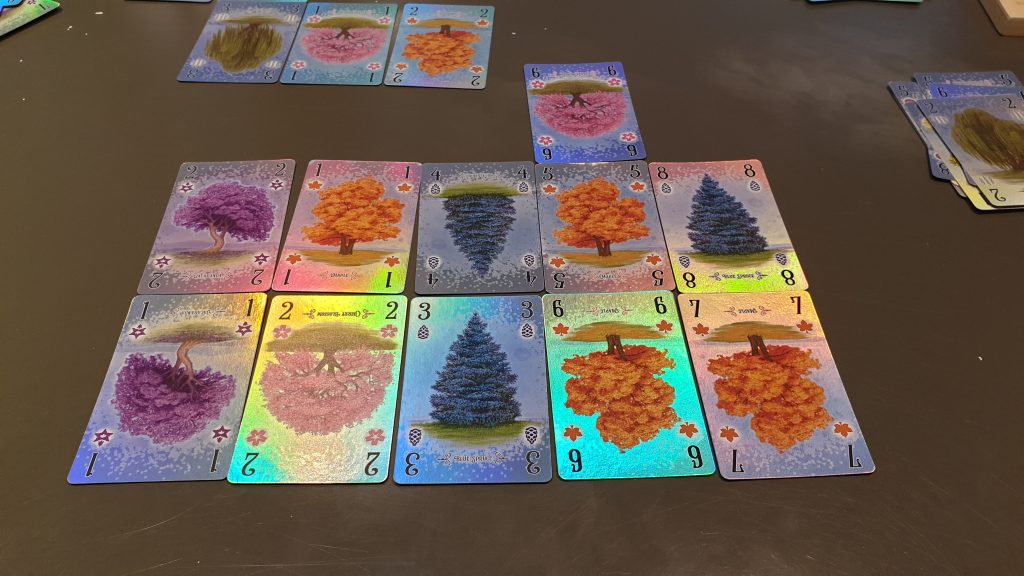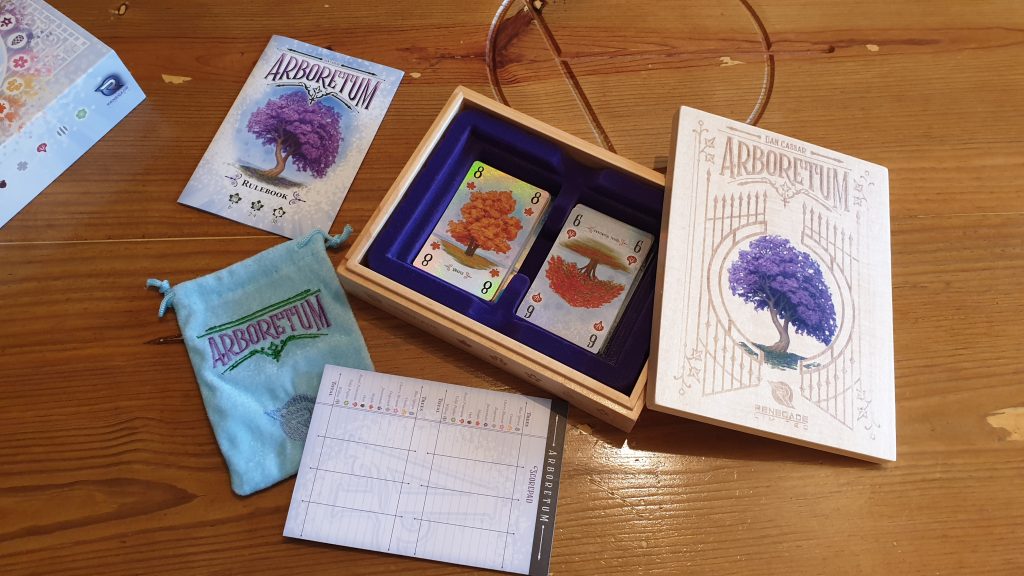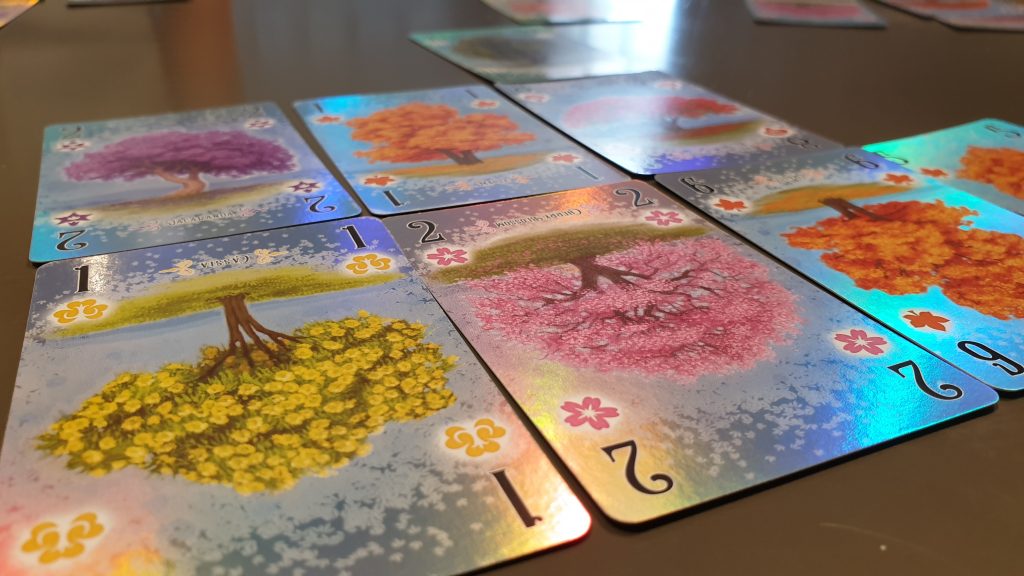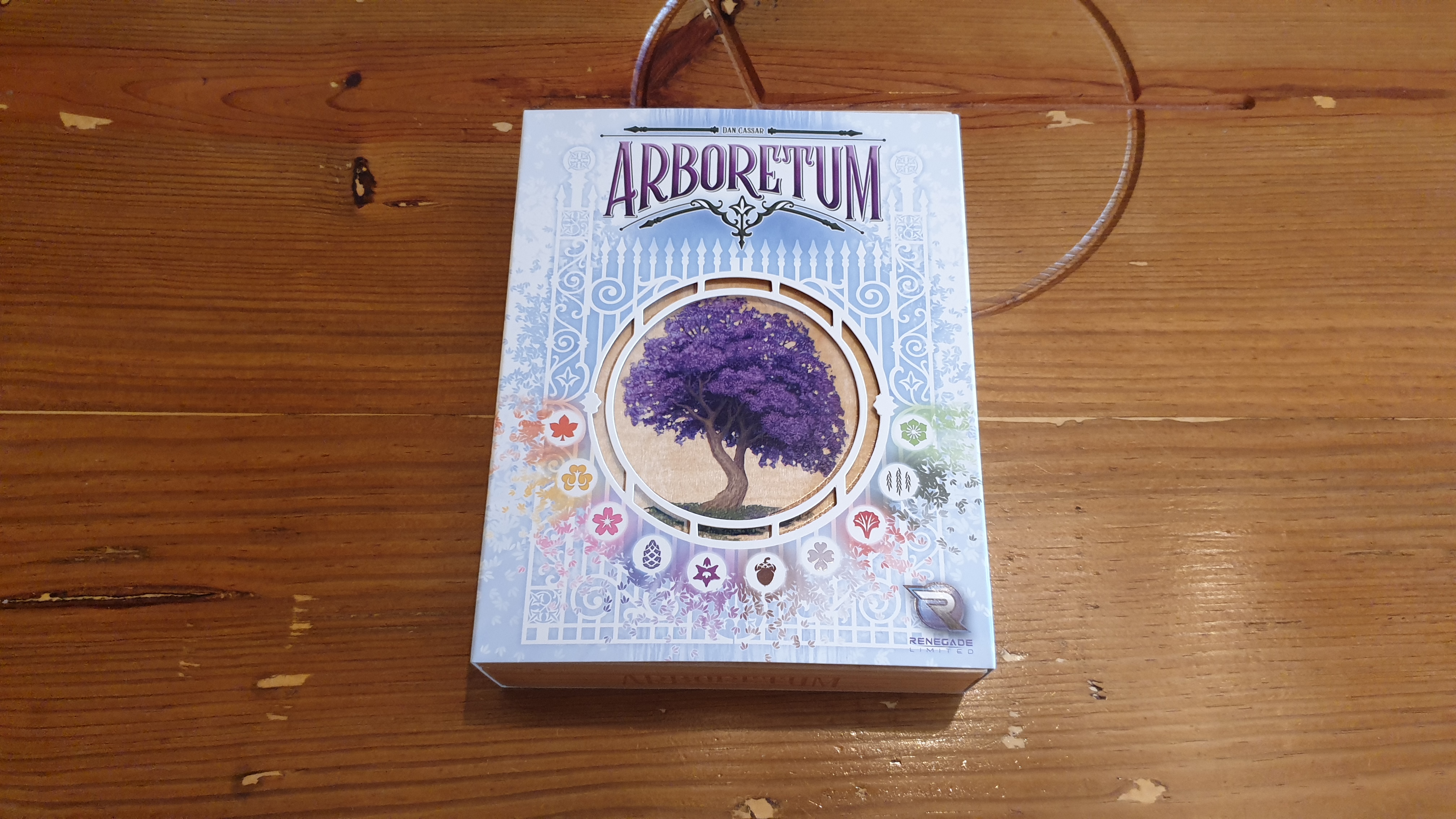Arboretum Deluxe Edition released in time for Essen Spiel last year but a new print run has just hit stores. Taking the 2015 set collection card game and giving it some special treatment, the gameplay itself remains unchanged. Therefore, this review will cover both the gameplay of either edition alongside comments specifically about the deluxe edition. Designed by Dan Cassar, and published by Renegade Game Studios, the game sees 2 – 4 players attempting to line their garden with paths of beautiful trees. However, is there a solid root of gameplay or is it barking up the wrong tree? Let’s find out!
Depending on the player count a number of the different tree types are removed from the deck, otherwise the deck only needs shuffling. Once this is done players are dealt a starting hand of 7 cards and the rest of the deck is placed at the center of the table. Setup is now complete, with the deck containing cards numbered 1 – 8 from the various tree types. One uncommon part of Arboretum is that players hands will start and end the game the same size – even being 7 cards between turns.
On a turn the active player must draw two cards. Next, the player plays one card from their hand into their own personal Arboretum. Finally, they discard a card face up to their own discard pile. Drawing the two cards isn’t quite as simple as just taking cards from the central deck. A player can choose to take those 2 cards from the deck, an opponent’s discard pile or their own discard pile. Both cards do not need to come from the same location either, but they are always taken from the top of the chosen pile.

Playing a card is relatively straightforward in concept, though how the game scores makes the choice harder. When adding a card to your Arboretum it must be adjacent to another card, not including diagonally. The game continues with players doing the three staged turns until the central deck is completed. At this stage players vie for the right to score the different types (each type is a different colour/shade to make this easier). As mentioned, at the end of the game players will still have 7 cards in their hand. From what is left whoever has the highest combined value of each type gets to score that type. Note, it matters not what you could score from a type if you cannot score it.
Paths of trees may score points. If an orthogonally connected path of cards of increasing numerical value starts and ends with the same type of tree it could score you points. If you are the player scoring that type then 1 point is earnt per card in the path. On top of this minimal bonus points are scored for the path being only of the one tree type, if it starts with a 1 or ends with an 8. Going through each type in play, the winner is the player that gains the most total points.
The scoring is something that takes a game or two to wrap your head around. This is mostly due to the right to score mechanic. It is incredibly easy to get wrapped up in building out an amazing path and forget to hold onto any of the right type. This can be frustrating at the end of the first game but you certainly don’t forget it again as a result. For some though it is enough to put them off playing again, as it can mean some rather disheartening scores.

Taking around 30 minutes when up to speed with the game the first game will last longer. The scoring is the primary cause of this as people try to work things out and ask questions. Past the first game there are still many potential causes of analysis paralysis. While every turn you are doing simple actions they all have repercussions. The amount of information on the table, such as seeing what other players are going for, is a lot to take in. Then, there is the fact if you can remember what has been discarded and when more information is at your fingertips it can be overwhelming.
The production quality of the deluxe edition is okay, though is perhaps not as high as some may expect. The wooden box is made of very light weight wood, feeling more delicate to the touch than sturdy. It also features a lift off lid. This won’t be a problem for those wanting to store it flat, but it falls off if stored vertically without the cardboard sleeve. A more robust feeling wood with a hinge opening would have dramatically made the game feel deluxe, as it is it looks special but doesn’t feel premium.
Next, there is no pen or pencil included alongside the scoresheet. This wouldn’t be more than a notable issue in a normal edition of the game. Nevertheless, for this deluxe edition it only hints towards the production costs being meddled with for a small saving. Still, the game is all about the deck itself! Though the cards have rather split players. Rather than just featuring a little shine from foil they are almost fully foiled. This gives them a marvelous rainbow effect. It is a striking look which draws people to watch and ask about the game. Alas, in a bright room, they can also be extremely reflective to the extent some have said they are hard to look at.

Arboretum thrives when players know what they are doing, as the game length is kept down. As soon as anyone thinks too much about their turns it drags the game out – causing it to stay a little too long at the table. The slightly convoluted scoring puts people off before the game gets to hook them as it isn’t intuitive. This isn’t exactly great motivation for teaching the game. The most decisive element of the deluxe edition is the amount of foil on the cards. It is easy to recommend the Arboretum experience as slightly cutthroat but entertaining. Each turn, players have plenty of choice and it is rewarding when a master plan works. Recommending this specific edition is harder. If you’re looking for a blinged edition then the cards at least will be right up your street, though other elements let it down.
[Editor’s Note: Arboretum was provided to us by Asmodee for review purposes.The game it is currently available from local board game stores, find your local store here]

